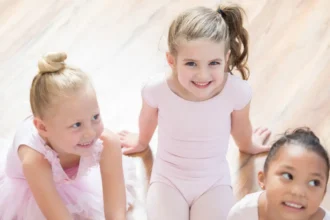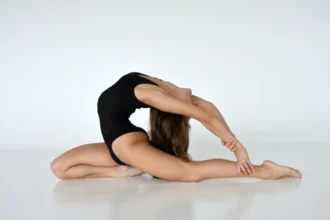In men’s artistic gymnastics, the floor exercise stands out as a highlight in the Olympic lineup. Gymnasts have between 60 and 70 seconds to showcase their acrobatic skills alongside precise non-acrobatic movements like circles, scales, and press handstands. Unlike women gymnasts, men perform without music, depending entirely on their physical skills to engage the audience.
Let’s look at the five most challenging floor skills in men’s gymnastics, spotlighting moves that with incredible complexity.
5. The Zapata
The Zapata, a move submitted by Spanish gymnast Raúl Zapata, is one of the most intricate and challenging acrobatic skills in men’s gymnastics. This skill involves a double salto forward tucked with one and a half twists. Rated a G in the 2017–2020 Code of Points, the Zapata is tied for the highest rating (with another element) for acrobatic moves. It’s a highly complex skill, requiring both strength and precision to execute properly.
This move is not one that many gymnasts attempt because of its complexity. The creator, Zapata, has earned the title “king of front tumbling”, and this move exemplifies why. The level of difficulty and the amount of twist required to pull off this skill is extraordinary. It’s one of those rare tricks you might see only in high-level competitions, but even fewer gymnasts will be able to land it cleanly.
4. Double Layout 2.5 Twist
The Double Layout 2.5 Twist is another acrobatic marvel. This move involves a double salto backward, performed in a stretched position, with two and a half twists. It is rated G, similar to the Zapata, but it presents unique challenges. The landing is what makes this move so difficult. Gymnasts must perform a blind landing, meaning they can’t see the ground until the last moment, making it harder to stick the landing perfectly.
In gymnastics, precision is key, and small missteps or hops during landing can lead to deductions. A small step or hop results in a 0.1 deduction, and a large hop or step can incur a 0.3 deduction. It’s a rare move, and there is very little footage of it in competition, making it all the more remarkable when performed correctly.
3. The Liuken (Triple Back)
Named after Valeri Liuken, the Liuken involves a triple salto backward in a tucked position. This move, commonly known as the Triple Back, was submitted by the Soviet gymnast in 1987 and remains one of the most impressive and difficult acrobatic elements in men’s gymnastics today.
The skill requires an incredible amount of height to execute properly, with gymnasts needing to gain enough vertical lift to complete three full rotations. The challenge is not just the height, but the speed with which the gymnast has to rotate. Most gymnasts will “cowboy” their legs — a term for spreading their legs during the flip to increase the speed of rotation — which can incur minor deductions (0.1 or 0.3 points) depending on the angle.
Though it has been decades since it was first introduced, the Triple Back remains one of the most impressive elements to watch. Even today, this move continues to captivate audiences with its sheer difficulty and the athleticism required to perform it.
2. The Shirai 3 (Triple Double Layout)
Next on the list is the Shirai 3, named after Japanese gymnast Kenzo Shirai, who first performed this move at the 2015 Toyota International Gymnastics Competition. The Shirai 3 is a double salto backward performed in a stretched position, with three twists. This move is one of the most challenging twists in men’s gymnastics, and it’s rated H in the Code of Points.
It’s a visually stunning move, but what makes it so difficult is the amount of rotation required in the air. The gymnast must execute two back flips while simultaneously performing three full twists. This skill has become iconic in the gymnastics world, and like the Lukin, it represents the cutting edge of acrobatic floor routines.
1. The Nagorni (Triple Back Piked)
Finally, the Nagorni is arguably the most difficult floor skill ever performed. Named after Russian gymnast Nikita Nagorni, this move consists of a triple salto backward performed in a piked position. It was first introduced by Nagorni at the 2021 European Championships and was given an I rating in the Code of Points, making it the first-ever I-rated skill on floor exercise.
The Nagorni is as impressive as it is difficult. It requires immense strength, precision, and timing. The gymnast must rotate three times while holding a piked shape, which is an incredibly difficult body position to maintain while in the air.
To execute this skill correctly, gymnasts must keep their legs straight and their hips angled to less than 90 degrees during the salto. The element has only been performed twice in competition, both times by its creator, making it a truly rare and groundbreaking skill.
Which skill from this list do you find the most impressive?
These five floor skills are like guiding lights for aspiring gymnasts, showing them the way to greatness. What lies beyond what we think is possible? It’s found in the determination of those who challenge gravity and reach for the stars.





